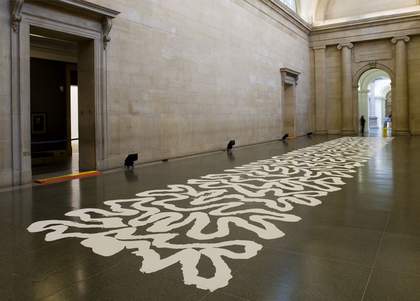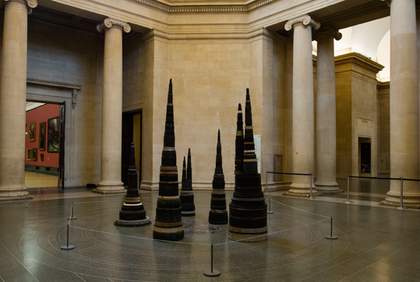In 1988 the published shortlist was abolished, with the winner, Tony Cragg, announced outright and awarded a solo exhibition. In the following year a list of commended artists was made public and Richard Long was declared the winner for his innovative practice, which extended the possibilities of sculpture beyond traditional methods and materials.
Without an exhibition of shortlisted artists in 1988 and 1989, the Turner Prize seemed even more insular, with the public unable to see and judge for themselves the artists who had been considered by the jury. The failure to secure a sponsor for the prize led to its suspension in 1990, bringing an end to these turbulent early years.
Artists and works on display:
Tony Cragg
Minster 1987
Metal, wood, plastic, rubber
Lisson Gallery
Tony Cragg sees man-made objects as ‘fossilized keys to a past time which is our present’. Minster is typical of the work he made during the mid-1980s which involved stacking or heaping a multiplicity of found items in order to resemble another object. Here gothic architectural forms recalling chimneys, church spires and minarets emerge from the methodical arrangement of circular machine parts.
Richard Long
White Water Line 1990/2007
Mixed media
Courtesy the artist and Haunch of Venison, London
Since the mid-1960s, Long’s practice has been based on his relationship with the landscape through the medium of walking and his use of natural materials. White Water Line was first created in the Duveen galleries for a Tate exhibition offered to Long after he won the Turner Prize in 1989. Created by pouring liquid pigment in one continuous movement, the simple elegance of this snake-like shape transforms the building’s imposing neo-classical architecture.
‘A walk marks time with an accumulation of footsteps. It defines the form of the land. Walking the roads and paths is to trace a portrait of the country. I have become interested in using a walk to express original ideas about the land, art and walking itself.’
Richard Long, Words after fact, 1982



